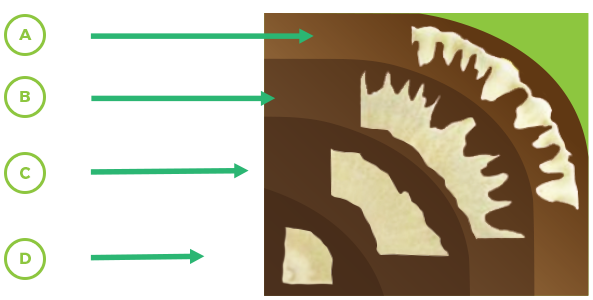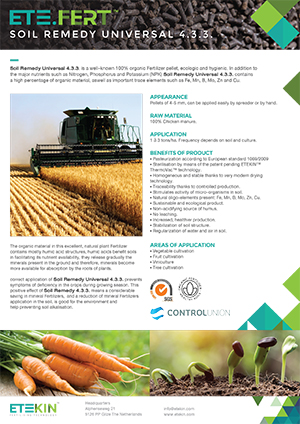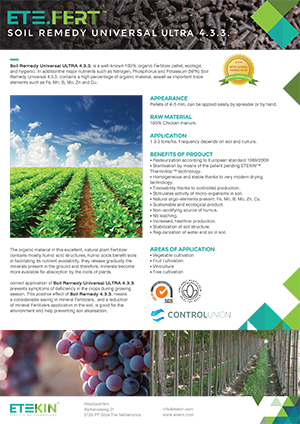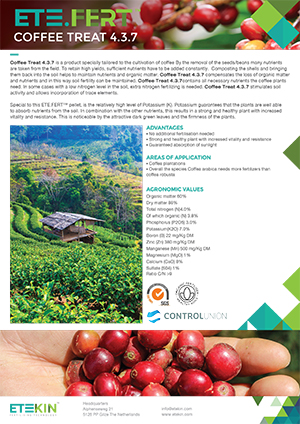Custom made formulations:
Because each and every soil has its own particular chemistry and because the ETEKIN production process offers a watertight batch-linked tracebility allowing batch specific additions, we prefer to work out a tailor made solution based on soil tests, plant sap analysis and historical performance data. Please feel free to contact us for further discussion and consultation.
Custom made formulations
- Soil-balance analysis. This analysis gives insight in the ratio between available minerals and trace elements rather than absolute amounts. The TEC or Total Exchange Capacity is an important parameter to determine the “size” of the clay-humus complex which in turn is a reference for the soil’s capacity to hold minerals and deliver them to the plant.
- Nova Bioscan to determine the soil biology state. In this test we analyse, by means of a special microscope technique, the situation of bacteria, fungi, protozoa and nematodes in the soil. Because all of them play crucial roles in maintaining soil integrity and mineral uptake this test allows us to score biological soil health.
- Chroma analysis to obtain a general view about the quality of a soil sample. A chroma contains 4 zones. Each specific zone indicates a certain quality aspect. The figure below shows and explains the quality aspect of each zone
Chroma analysis in detail

A: Outer zone
This zone indicates the condition of the humus in the soil.
It shows the quality of the organic matter in the soil. This can differ from raw organic matter up to stable humus.
In a soil with a good humus condition (stable humus), this zone shows a light brown / beige colour. Raw organic matter or burned organic matter (bad quality compost) shows a dark brown closed zone.
B: Middle zone
This zone shows the quality of the soil life. The zone should be evenly covered with prickles.
The zone also needs to be wide enough. Does the zone show shallow prickles, or no prickles at all, then the soil life in this soil is not active enough or not present in good amounts.
C: Inner zone
This zone indicates the water / air holding capacity of the soil, as also the structure of the soil. This means the structure of the soil that is build by the soil life and not made by cultivating with machines. The zone should show clear lines that lead from the central zone up to the outer zone. Then the soil is well-structured en aerated. If the zone doesn’t contain these lines, the soil might be compacted and doesn’t have enough water holding capacity.
D: Central zone
This zone gives an indication of the general soil fertility.
A fertile soil gives a white coloured zone. A chemically threatened soil will show a dark, small zone.



